
This year, India overtook China to become the world’s most populous country. But it struggles to develop its economy and lags behind many other nations in terms of its investment in science and technology. How can better funding for research help its economic development?
The human factor
India has the world’s largest population, but how well does it look after all those people? The Human Development Index is a United Nations metric that quantifies a country’s human development in terms of health, lifespan, education and standard of living.
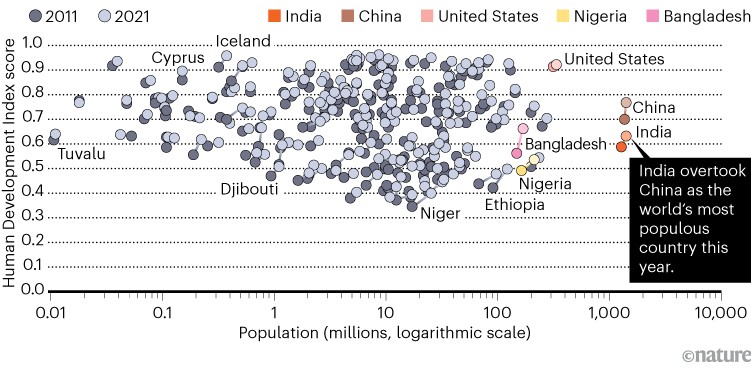
Source: https://data.worldbank.org; United Nations Development Programme. Infographic by Mohamed Ashour
How they compare
In some key indicators of human development, India lags behind high-income countries such as the United States. For easy comparison, the scores in these radar charts are given in the percentile rankings of each country compared with all other countries.
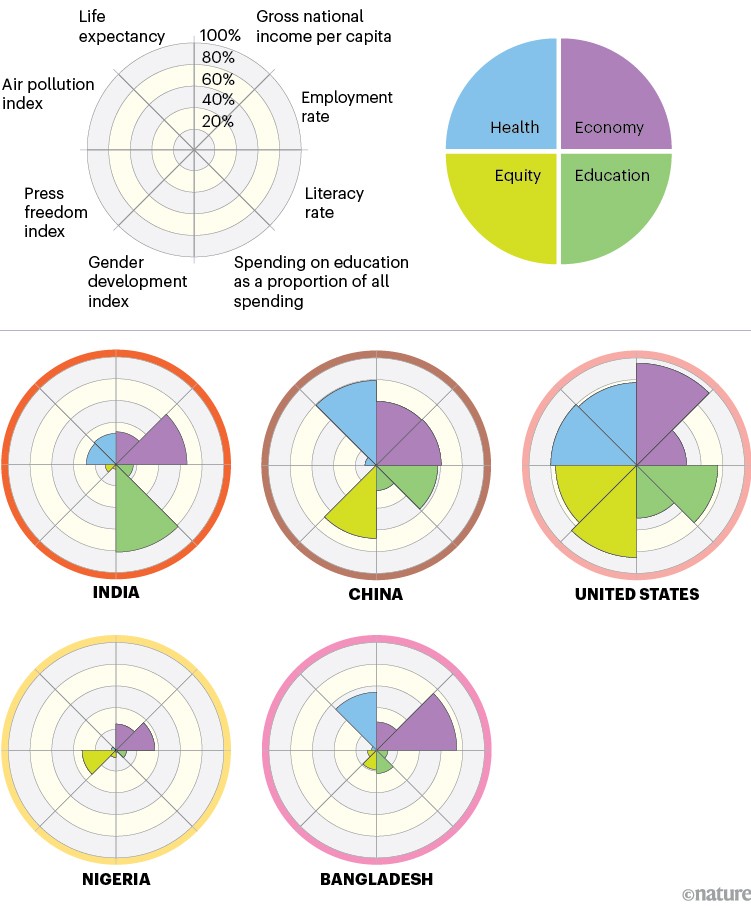
Source: United Nations Development Programme; https://worldpopulationreview.com; https://www.numbeo.com; https://data.worldbank.org; RSF Reporters without Borders. Infographic by Mohamed Ashour
Science spending
India spends less than the global average on research and development (R&D), but it has kept this spending largely consistent as its economy has grown in the past two decades. A good indication of a science-based society is the proportion of investment in research from private sources. India lags behind other countries in this metric. It is, however, the world’s largest outsourcer of programmers, and 60% of the world’s vaccines are produced in the country. And in August this year, India joined an exclusive club, becoming only the fourth country to make a soft landing on the Moon.
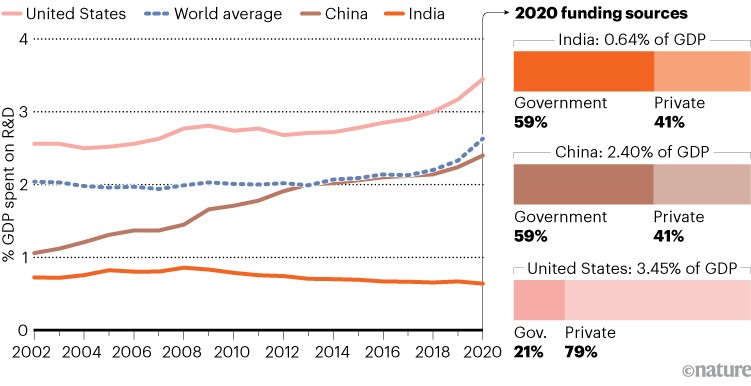
Source: https://data.worldbank.org; https://sgp.fas.org; Government of India’s Department of Science & Technology. Infographic by Mohamed Ashour
From degree to PhD
India has a smaller proportion of people with a university-degree-level qualification than many other nations, but those who do get an undergraduate degree are much more likely to complete a PhD. Indeed, India has the highest proportion of university graduates who go on to complete a doctoral degree in the world, at around 5% of graduates.
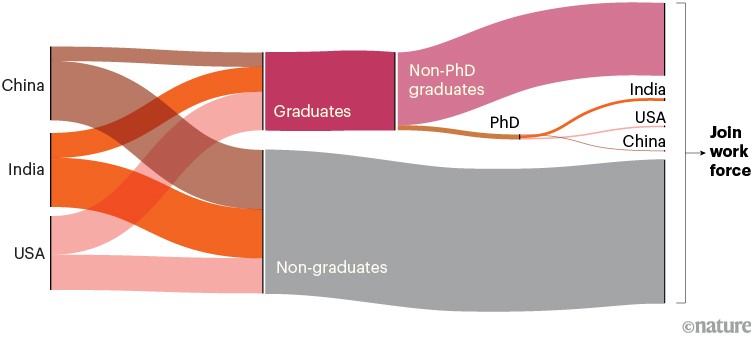
Source: https://gpseducation.oecd.org. Infographic by Mohamed Ashour
Publishing performance
India is among the world‘s most prolific publishers of research, behind only the United States and China.
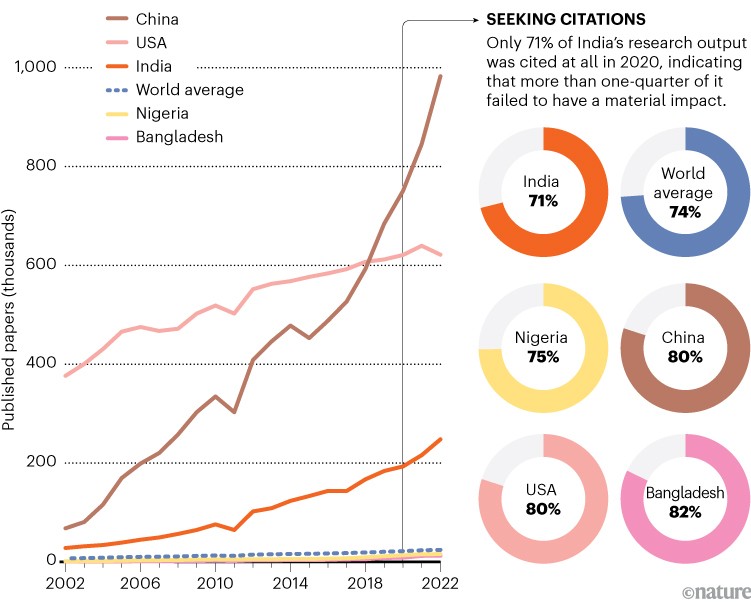
Source: https://www.scimagojr.com; https://data.worldbank.org. Infographic by Mohamed Ashour

 India’s year in science
India’s year in science
 Renewable energy for the subcontinent
Renewable energy for the subcontinent
 We need to talk about water
We need to talk about water
 The climate disaster strikes: what the data say
The climate disaster strikes: what the data say
 I predict solar storms
I predict solar storms
 The fight against antimicrobial resistance
The fight against antimicrobial resistance
 How high-impact papers from Indian researchers are shaping science
How high-impact papers from Indian researchers are shaping science
 India struggles to turn science into societal benefits
India struggles to turn science into societal benefits
 Big ideas: India’s drive to stem the brain drain
Big ideas: India’s drive to stem the brain drain
 I study depression in the lab and advocate for mental health in academia
I study depression in the lab and advocate for mental health in academia







